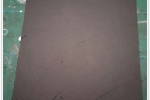How to make a metal plate
12
Comments
How to make steel plates using cardboard
After making some steel loads for my 1/24 haulage, I received many request for a 'How-to' article on how I made them. So, here goes. I tend to look for easier ways to achieve the end results with fewer procedures. Sometimes itís hard to not do tutorials with long steps but sometimes it is necessary to give an absolute accurate procedure that will make it easier for others to follow and understand. Now my method is certainly not the only way, so if you know of a much easier method by all means, use it. After-all, itís the end result that counts. The materials used are ones I had on hand. They are not a must to have for doing these steps. An equivalent will do just fine. So letís get on with it.List of things to help achieve the end results:
* Poster board
* Sharp Blade
* Metal edge ruler
* Black primer paint
* Brown paint (I used Tamiya earth spray paint)
* White felt pen (optional)
* Mig's light and standard rust pigments (or any other brand)
* White Felt marker (this is optional if you want markings on the steel)
* Small old brush (preferably one with short round bristles)
* Medium size round brush (It does not have to be round. I just think it makes the job easier when applying the pigment to conform to the desired patterns)
* Mig's odorless enamel thinner (I guess any brand would do and it doesn't have to be odorless either. Itís just easier on the nose)
* Matt varnish (I used Vallejo but I guess any brand will do. Test first to see so it won't ruin the effect of the end result)
* Steel metallic color (my favorite is Leadbelcher from Citadel. Always use it in my modeling. But once again, if you prefer another brand, be my guest)
* Wide/medium size flat brush (this will be used for dry-brushing)
Step one:
1. Cut a piece of the required cardboard you are going to use for this procedure. (One important note when cutting cardboard. Always, Always, use a sharp hobby knife and a straight-edge ruler to cut the arks you need, to size. This way you will get nice clean edges. If not the edges will look weird and out of place. Make sure the edges don't buckle up as well. It will definitely, not look right as steel plates don't buckle up in that fashion)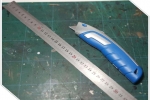
Metal edge Ruler with a sharp hand blade (click to expand)
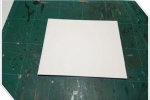
The poster board in this photo is the size I used (click to expand)
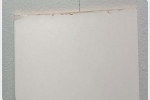
Your cuts should be almost clean and should not have any buckles in them, like in this photo (click to expand)
3. Spray brown paint in patches over the cardboard. Do not cover the entire cardboard with the brown paint (I guess you could but you can do that on the opposite side when you have completed the side you are already working on. Just let some of the black show through. The aim is that you are trying to make variations or in the way the steel will look in the end. More of a 2D effect. Let dry thoroughly before proceeding to the next procedure).
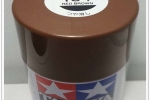
Tamiya Red Brown. You can use any other brown you prefer (click to expand)
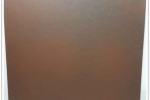
You can see some of the black showing through (click to expand)
Comments
Is there any advantage to using cardboard, or is it just because it is cheaper?
JUL 24, 2019 - 11:11 AM
I can think of a some:
1. Cheap to come by. AKA, easily available.
2. light weight
3. Easy to work with, in terms of application.
4. Does not need a lot of tooling
JUL 24, 2019 - 08:53 PM
The markings you see could be hand written in usually white or yellow paint stick, and may be the plate identity or tracking number, a heat number, order number, grade of steel, and maybe the gauge/thickness and also length x width.
Some places may line mark that information down the length of the plate, with what is essentially an inkjet printer (or some places use a set of stencils on a wheel - thatís old school)
Or there might also be a printed tag/sticker attached to an end with ID/Heat/grade and probably some bar code.
Not all plates would be scaled up and rusty. Stainless steel or other specialty metal plates like nickel or titanium alloys would be pickled clean, and would be somewhat shiny, or even ground and would be very shiny and clean.
If itís regular carbon steel and fresh off the rolling mill, I think the metal with have a more blue/gray coloration from the mill scale/oxide. If they sit out for a long time the oxide/rust will grow and it becomes the red/brown.
And plated unless they are belt ground are rarely totally smooth. There will be some pits (would be small in most models), there could be some firecrack pattern from the rolls that may repeat - many other things get transferred from the rolls or vacuum lifters etc.
AUG 14, 2019 - 01:52 PM
Copyright ©2021 by Charles King. Images and/or videos also by copyright holder unless otherwise noted. The views and opinions expressed herein are solely the views and opinions of the authors and/or contributors to this Web site and do not necessarily represent the views and/or opinions of Armorama, KitMaker Network, or Silver Star Enterrpises. All rights reserved. Originally published on: 2019-07-24 16:57:22. Unique Reads: 16487




